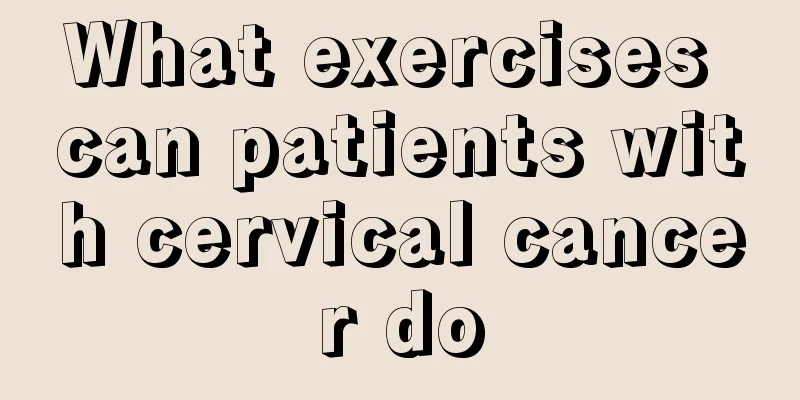What are the preventive measures for hand, foot and mouth disease

|
Hand, foot and mouth disease is related to seasonal infection, and different changes occur in different seasons. Now spring is an important period for the spread of the disease. Hand, foot and mouth disease begins to spread at this time, and it often occurs in children under six years old. Because children under six years old have low body resistance and their ability to prevent viruses has not yet fully matured, they are most susceptible to viruses at this time. Complications of hand, foot and mouth disease also include encephalitis, fever, and brain neurotic spasms. Severe cases can affect life safety. Hand, foot and mouth disease should be prevented and cared for in normal times. When multiple small blisters are found on the child’s palms and mouth at the same time, and they are very itchy and accompanied by fever symptoms, you should go to the hospital as soon as possible to check whether the child has hand, foot and mouth disease. Prevention measures for hand, foot and mouth disease: During the hand, foot and mouth disease epidemic season or area, try to avoid going to crowded public places. There is currently no specific vaccine for prevention (the domestic hand, foot and mouth disease vaccine has completed phase III clinical trials). There are more than 20 types of enterovirus known to cause hand, foot and mouth disease in the world, and there is no cross-immunity between types (if you have had hand, foot and mouth disease, you will only be immune to the type of virus that you have been infected with). Isolation of the source of infection: The patient should be isolated for no less than two weeks after onset of illness, or one week after symptoms disappear. Cut off the transmission route: In epidemic seasons and areas, "frequent ventilation, frequent hand washing, regular disinfection, eating cooked food, and controlling infection" are the key. Finally, parents should not panic even if their children are infected with hand, foot and mouth disease, because most of the cases are mild. As long as the child's general condition is good, it will be fine. It will usually be fine in about a week. However, if the child shows symptoms such as poor spirits, drowsiness, vomiting, easy to be frightened, headache, high fever, etc., it is necessary to see a doctor. First of all, hand, foot and mouth disease is not scary. Only by understanding how hand, foot and mouth disease is transmitted can we prevent and control the disease more effectively. Hand, foot and mouth disease is caused by multiple (types) of enterovirus. Of course, not all enteroviruses can cause hand, foot and mouth disease. At present, there are more than 20 (types) of enteroviruses reported worldwide that cause hand, foot and mouth disease. Among them, Coxsackievirus A16 (CoxA16) and enterovirus 71 (EV71) are the most common. In my country, CoxA16 is the main cause, and EV71 is rare. Hand, foot and mouth disease caused by Coxsackievirus and EV71 are indistinguishable in appearance, but the chance of complications or severe illness of hand, foot and mouth disease caused by EV71 is greater than the former. Children with hand, foot and mouth disease and asymptomatic carriers of the virus are the main sources of infection: the patients' skin rashes or broken blisters, oral secretions, feces, etc. often carry a large number of viruses. The disease is most contagious during the first week. Asymptomatic virus carriers play an important role in the outbreak of hand, foot and mouth disease. These people (latent or overt infection) do not show corresponding symptoms and will not attract the attention of the public and doctors, but they contain a large number of enteroviruses that can cause hand, foot and mouth disease, which can easily be transmitted to healthy susceptible people. For example, asymptomatic adults carrying the virus can transmit the virus to infants and young children at home. Transmission routes of hand, foot and mouth disease: Direct contact transmission: viruses in feces, skin rashes or broken blisters, and the mouth can directly contaminate people with whom they come into contact. Transmission through the digestive tract: Viruses in feces, skin rashes or broken blisters, and the mouth can contaminate objects in the environment. Towels, cups, milk bottles, tableware, toys, clothing, bedding, food, water sources, etc. contaminated with enterovirus can all transmit the virus through hand-to-mouth. Transmission through the respiratory tract: Patients spread the virus through droplets in the air by talking loudly, coughing, sneezing, etc. When the virus in the air reaches a high concentration, it will be transmitted to healthy susceptible people in the same environment. Hospital cross-infection: If the consulting room or waiting area that has admitted patients with hand, foot and mouth disease has poor ventilation and public facilities cannot be disinfected in time, cross-infection between patients may occur easily. There have also been reports of hand, foot and mouth disease caused by unqualified disinfection of oral instruments. Preschool children are the most susceptible to infection and disease: the immune system of preschool children (3 to 6 years old) is not fully developed, and their resistance to pathogenic microorganisms is weaker than that of adults; nurseries, kindergartens, schools, etc. are the places where these children gather most densely; and their hygiene habits are still poor, and toys and supplies are often shared; in addition, the incubation period and prodromal symptoms of hand, foot and mouth disease are not obvious, and it is easy to be misdiagnosed; therefore, hand, foot and mouth disease can easily spread rapidly in nurseries, kindergartens, and schools. |
<<: What is seborrheic dalitis?
>>: Can neurogenic urinary frequency be treated? What causes frequent urination?
Recommend
What are the prevention methods for esophageal cancer?
What are the prevention methods for esophageal ca...
Will cervical cancer cause infertility?
Will cervical cancer cause infertility? 1. Whethe...
Uses of aluminum sulfate
I believe most people are familiar with aluminum ...
Come and take a look at which diseases lead to the occurrence of tumors?
Nowadays, more and more diseases are appearing in...
How long will it take to give birth after three bone sutures are opened?
When the three sutures of a pregnant woman open, ...
Upper gastrointestinal bleeding is one of the common symptoms of advanced cardiac cancer
Usually, cardia cancer occurs in the gastric card...
Does drinking tea really cause spots?
Nowadays, few young people have the habit of drin...
What's the matter with sudden acne breakouts?
In real life, acne has always been a skin problem...
Several common treatments for colorectal cancer
Colorectal cancer is a common type of intestinal ...
What is the cause of intestinal disorders
If you have intestinal disorders, you should pay ...
What are the methods to detect early lung cancer
Lung cancer is extremely harmful to the human bod...
What adverse reactions are common in patients with lung cancer undergoing chemotherapy? 5 dietary tips after radiotherapy for lung cancer
With the continuous improvement of medical techno...
What should I pay attention to after using medicine to remove moles
Although using laser to remove moles is a quick a...
What are the typical symptoms of colorectal cancer
In daily life, people are familiar with colorecta...
Is it good to drink milk before going to bed every day?
Milk is the most consumed beverage in our lives. ...









